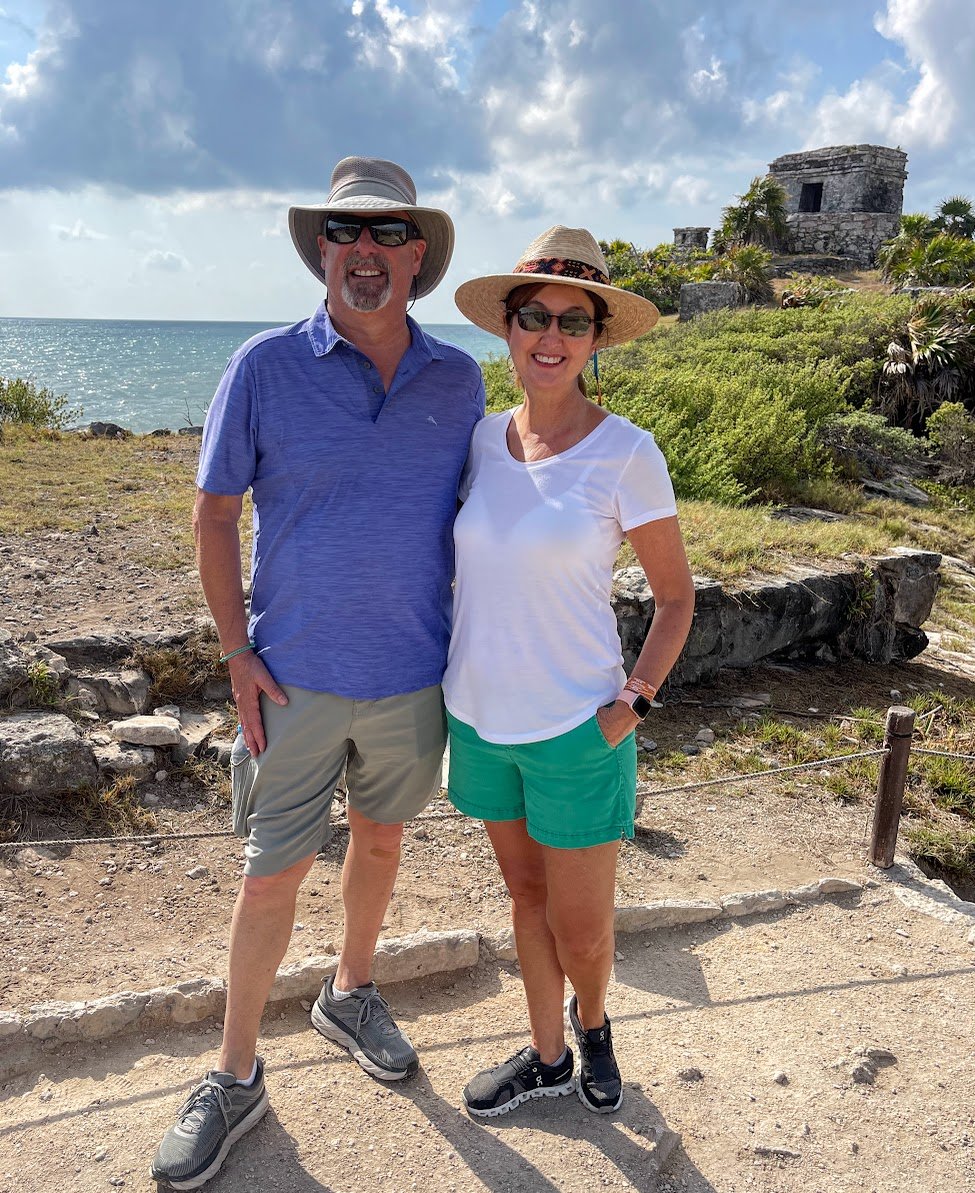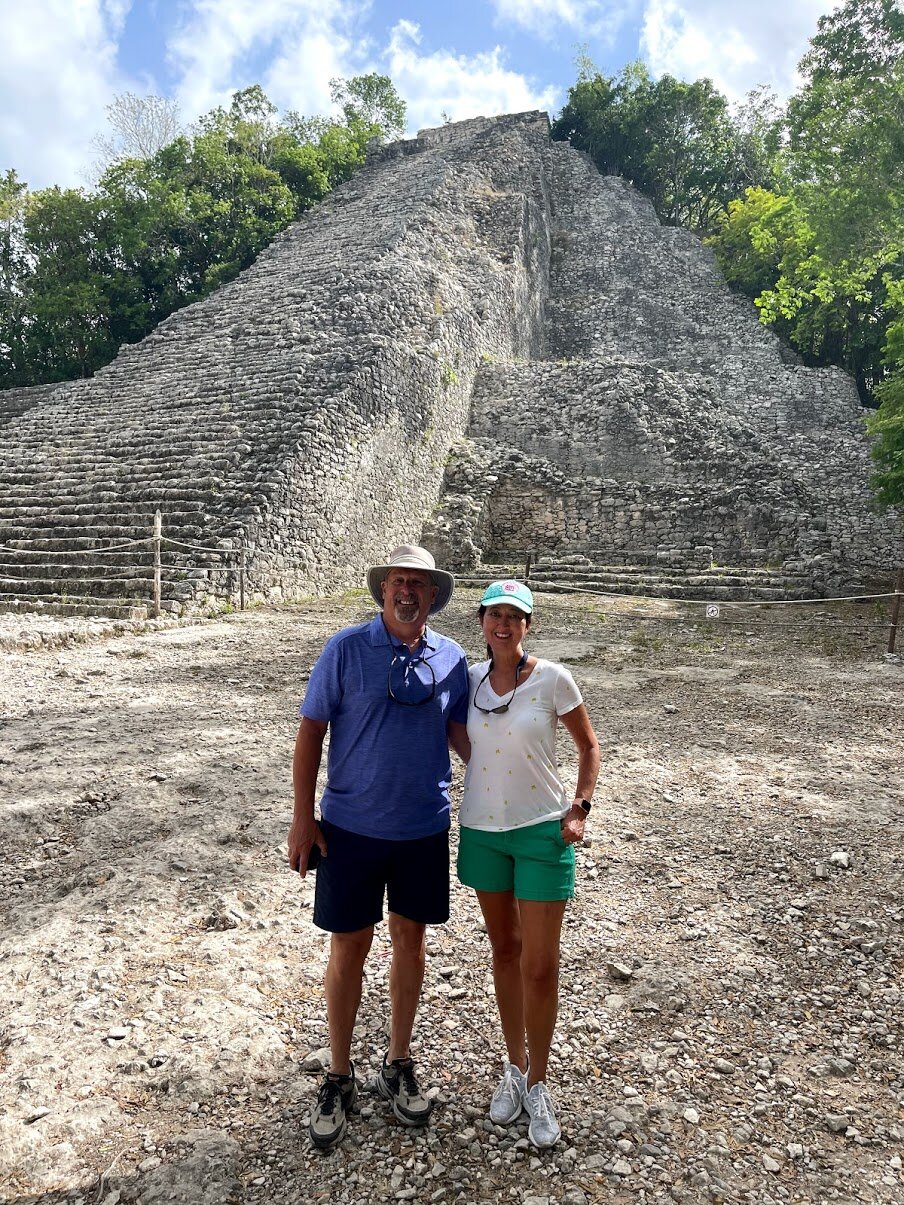Visiting Coba Mayan Ruins and Cenote Swimming
During our recent trip to the Yucatan Peninsula, Mexico, we had the opportunity to take a day trip with a private guide to visit Mayan Ruins.
Part of the day trip included a swim in a cenote. A cenote is a natural sink-hole filled with fresh water. There are hundreds of them in the Yucatan Peninsula area. Many are interconnected with long caves that go for miles. Divers and snorklers go from cave to cave seeing an abundance of fresh underwater life. On this day, we just took a quick dip in an open water cenote. It was a great way to end our tour on a very warm and humid day.
We arrived at the site right at opening at 9AM. This meant a 7AM pick up at our hotel. Fortunately, our guide sensed we needed coffee, so our first stop was Starbucks.
The advantage to going early is you beat some of the heat of the day as well as getting ahead of the crowds.
A large area to explore.
The Coba site is approximately 127 acres with dirt roads connecting each of the open ruins. You’ll see shortly how we got around the total site in just under 2 hours.
Our guide was smart, he took us to the furthest ruin first, to keep us ahead of the crowds.
Archeologists believe the Coba was first settled between 50 BC and 100AD. However, the greatest growth seems to have been between 200 to 600 AD. It is believed that up to 50,000 people lived in Coba at it’s peak population.
The ruin below is the Nohoch Mul Pyramid. It is 137 ft high. You used to be able to climb it. I was sorry we could not climb it, as, from the top is has views of the two neighboring lakes, Lake Coba and Lake Macanxoc. The views are supposed to be stunning. Our guide shared that this pyramid was strictly used for sacrifices. Who knows?
Another unique piece of history discovered in Coba were the Stelas, or monuments. They depicted the rulers or people of high position with formal dress and head dress on holding their armor. They seemed to tell a story of the time. Below is a stela that had been recovered and pieced back together.
Below is a Mayan watchtower called Xaibe. The reason archaeologists believe it was a watchtower is, Xaibe sits at a crossroads of 4 major “Sacbes” or Mayan roads. There were miles and miles of these roads discovered going all the way to the sea, probably for fishing and trade. The roads were made with limestone to help illuminate at night.
The Ball Courts
There are two ball courts in Coba. This was a form of entertainment that used a rubber ball. There were variations of the game that involved teams of 2-4 players.
There were various versions of how to play this game. One was using the hip to move the ball around with a goal of getting through the ring at the top. Seems ok, right? However, there were times that the losing team was sacrificed by death. Sure motivates you to win.
Group Site
This temple was in the center of what was a small village. Huts would have been around but there were remains of what looked like little “apartments” at the base of the ruin.
This is a great example of a ruin that is partially excavated. To the left you can see where the trees, rocks and debris were removed. To the right you see it in a non-excavated state, looking more like a mound. There are many, many of these “mounds” around Coba, demonstrating there is more to learn at this ancient Mayan site.
But, how did we get around? By bikes! For just $2.50 USD we rented bikes which allowed us to cover a lot of the site in a short period of time. It was a lot of fun!
Bumpy roads
The roads were pretty unimproved so we bounced along. In this picture it seems we are the only ones in the park but at times there were bicycle traffic jams.
Last picture in Coba of yet another temple with a Stela restored in front of it. I was so glad we had a chance to visit this site!
Following the Mayan ruins bicycle ride, we were hot! We had a short ride with our guide to our next stop; swimming in a cenote. After a short lunch at a local Mexican restaurant, it was time to jump in.
This beautiful cenote is in Parque Dos Ojos. We swam in one of the open cenotes. There are also semi-open and full caves, that are great for a full scuba dive. This was called Lily Pad Cenote. It was almost pristine except for the walkway around it, giving a feeling of being deep in the Yucatan jungle. There was a diving platform up high but they were not allowing jumping from it when we were there.
Lily Pads.
It was so pretty but that fresh water is cool! About 74 degrees in the water, a big contrast to the hot, humid day outside.
It was cool but we got used to it. They did require using life jackets. We did a bit of snorkeling in the very clear water. While in the water, we saw divers come out of the cave behind us. They had started their dive a few miles up the road.
Overall, it was a great stop and a great way to end a day of adventure!





















The English Countryside. Get completely charmed in three Cotswolds villages and the historic city of Bath